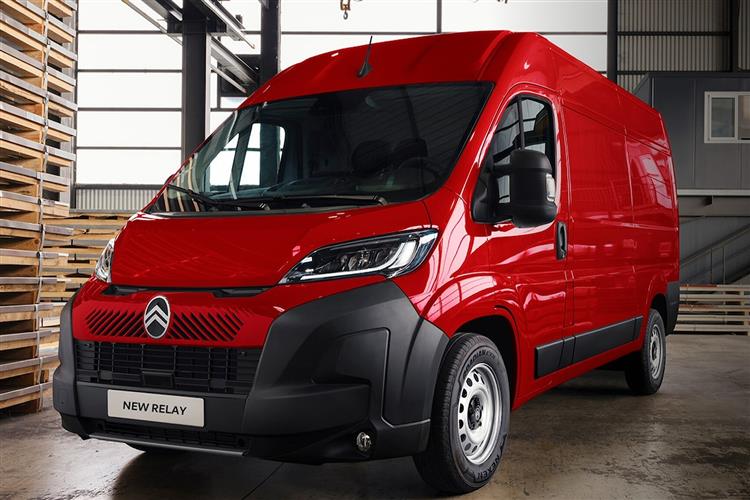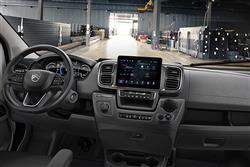RELIABLE ANCHOR LEG (some text hidden) --NONE--
By Jonathan Crouch
Citroen is looking to boost its share in the LCV market with its largest van, the Relay. Jonathan Crouch drives the latest version.
Ten Second Reviewword count: 60
Sharing a platform with the Peugeot Boxer, the Vauxhall Movano, the Fiat Ducato and the Toyota Proace Max, Citroen's Relay scores with keen pricing and strong equipment levels. If you thought this sector of the commercial vehicle market began and ended with the Ford Transit, you'll find the Relay offers a wholly convincing alternative, especially in this smarter updated form.
Backgroundword count: 190
If you're looking for a large panel van, the choices are dizzying. Many manufacturers all clamour for your money, each offering a vast range of model permutations that, when broken down, all do much the same thing. How on earth do you make a selection and have any confidence that it's the right one? Or, come to that, even a good one? The good news first. The van market has become so competitive in recent years that the dross has been shaken out. The other factor that's going to make choosing a big van so much easier is that there are basically just four fundamental vehicle families to choose from. You can go for the trusty Transit from Ford, the high-end Volkswagen Crafter/Mercedes Sprinter package, the increasingly popular Renault Master/Nissan Interstar tie-up or the van we take a look at here, the Citroen Relay, also sold as the Peugeot Boxer, the Vauxhall Movano, the Fiat Ducato and the Toyota Proace Max. The Relay's been with us since 2007 but here we look at the updated version of the third generation design. Citroen launched this improved model here in Spring 2024.
Driving Experienceword count: 219
The Relay goes to battle in diesel form armed with new 2.2-litre powerplants - there's a choice of 140hp or 180hp outputs. Both can be had either with a redesigned 6-speed manual gearbox or (for the first time) with 8-speed automatic transmission. Citroen has listened to feedback from existing Relay users who expressed a concern that road noise in the cabin was higher than the class benchmark and this Relay features shock absorber mountings designed specifically to reduce the amount of suspension bump and thump entering the cabin. The full-electric e-Relay model now gets a much larger 110kWh battery (to replace the previous 37kWh and 70kWh battery options); and that new battery pack energises a much more powerful 270PS motor (up from 122PS before). As a result, pulling power rises from 260 to 410Nm. The performance and range of the e-Relay can be optimised depending on conditions thanks to three driving modes, and features paddles located just behind the steering wheel that activate four levels of regenerative deceleration, thus enhancing range - now rated at up to 263 miles (up from 154 miles in 75kWh form). Whatever Relay variant you select, around town, this van can make light work of tricky urban situations, even with the big 'L3H2' variant, which offers a relatively tight 14.14m turning circle between kerbs.
To see the full road test text contact us on 0330 0020 227
Pictures (high res disabled)

.jpg)
|

|
Statistics (subset of data only)
Min |
Max |
|
Price: |
£33,529.00 (At 28 Aug 2025, 35 BlueHDi 140 L2H1) |
£48,215.00 (At 28 Aug 2025, e-Relay 40 L4H3 110kWh after PiVG) |
CO2 (g/km): |
158 |
163 |
Electric WLTP-Rated Driving Range (miles): |
263 |
|
Length (mm): |
4963 |
5998 |
Width (mm): |
2508 |
|
Height (mm): |
2254 |
2760 |
Weight (kg): |
1845 |
2000 |
Load Volume (l): |
10 |
17 |
Power (ps): |
140 |
180 |
Scoring (subset of scores)
Category: Vans
| Performance | |
| Handling | |
| Comfort | |
| Space | |
| Styling, Build, Value, Equipment, Depreciation, Handling, Insurance and Total scores are available with our full data feed. | |



